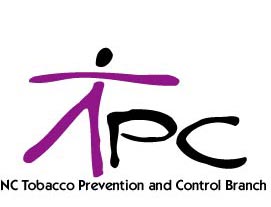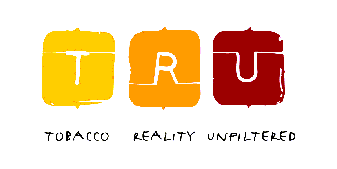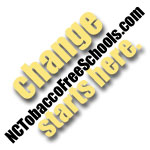The Scientific Evidence
The Task Force on Community Preventive Services' review of the
scientific evidence demonstrates that increasing the price of tobacco
products is effective both in 1) reducing tobacco use prevalence and
consumption among both adolescents and young adults and, 2) increasing
tobacco use cessation. 1 This Task Force is an independent
group of scientists who systematically reviewed the available tobacco
price data and its relationship to initiation, consumption and
cessation of tobacco use. Numerous studies indicate that a 10
percent
increase in product price results in an overall 3-5 percent decrease in
cigarette consumption and a 7 percent decrease in youth smoking.2
A recent study by the University of Illinois at Chicago (April 2001)
found that a 10% increase in the price of cigarettes would decrease the
probability of an adolescent starting smoking between 3 and 10 percent,
depending on the type of initiation, including initiation of any
smoking (including experimentation), initiation of daily smoking, and
initiation of smoking at lease one half-pack per day. Price was
found to have the largest impact on stemming the initiation of daily
smoking among youths.3 A study published in the American
Journal of Public Health shows that a 10% increase in price would
reduce smoking rates among pregnant women by 7 percent.
The Health Toll of Tobacco in N.C.
Tobacco use continues to be the leading preventable cause of mortality
in North Carolina, resulting in more than 14,000 deaths annually.4
Although 52 percent of adults have never smoked a cigarette, current
smoking
prevalence continues to hover around a quarter (24.8 percent) of the
population or an estimated 2.1 million North Carolinians.5
Currently 33.7 percent of high school and 14.3 percent of middle school
students use
tobacco products; 27.3 percent of high school and 9.3% of middle school
students smoke cigarettes (N.C. Youth Tobacco Survey 2003). The current
prevalence rate is expected to lead to the deaths of 210,000 current
youth if the trend prevails.6
The Economic Toll of Tobacco Use
Tobacco use in North Carolina costs the state $1.9 billion in direct
medical
expenditures alone, or more than $255 per person. In 1998, about 13
percent
($600,000,000 or $513.30 per recipient) of all Medicaid expenditures
were spent on smoking-related illnesses. Lost productivity costs
are estimated to be greater than $2.8 billion, or $370 per person. When
combined, direct medical and productivity losses cost NC $4.8 billion
annually.7
The Current Average Cigarette Tax
The current average cigarette
tax among all states is 79.2 cents per pack. North Carolina’s
cigarette tax is 5 cents per pack. North Carolina is ranked 50th
among the 50 states plus the District of Columbia; only Kentucky’s tax
is lower.
North Carolina’s smoking-caused deaths total $5.90 per pack
sold. 8
The current tax on smokeless tobacco products is 2 percent of the
wholesale
price in North Carolina, which is among the lowest nationally.
The Benefits of a 75-cent Tobacco
Tax Increase
A 75-cent per cigarette pack increase in North Carolina would result
in:
-
Fewer state packs sold per year:
-316.68
-
Percent decrease in youth smoking:
15.7%8
-
Fewer future youth smokers: 103,0008
-
Related lifetime health savings:
$1,235 million8
-
Adult smoker decline: -4.2%8
-
Fewer adult smokers: 67,0008
-
Youth Future Smoking Deaths
Avoided: 32,9008
-
Adult Future Smoking Deaths
Avoided: 14,7008
-
5-year healthcare savings from
fewer smoking-affected pregnancies & births: $15.9 million8
-
5-year healthcare savings from
fewer smoking-caused heart attacks & strokes: $26.7 million8
-
Long-term healthcare savings in
state from declines in adult & youth smoking: $1,788,800,0008
-
$346.5 million/year in additional
revenue.8
References:
1 Hopkins, DP & Fielding, JE, 2001. Recommendations Regarding
Interventions to Reduce Tobacco Use and Exposure to Environmental
Tobacco Smoke. Task Force on
Community Preventive Services, Supplement to the American Journal of
Preventive Medicine, 20 (2S).
2 Tauras, J, et al., 2001. “Effects of Price and Access Laws on Teenage
Smoking Initiation: A National Longitudinal Analysis,” Bridging the Gap Research, ImpacTeen,
and other price studies at www.uic.edu/orgs/impacteen. Chaloupka,
F, 1999. “Macro-Social Influences: The Effects of Prices and
Tobacco Control Policies on the Demand for Tobacco Products," Nicotine and Tobacco Research and
other price studies at http://tigger.uic.edu/~fjc; Chaloupka, F
& Pacula, R, 1998. An Examination of Gender and Race
Differences in Youth Smoking Responsiveness to Price and Tobacco
Control Policies, National Bureau of
Economic Research, Working Paper 6541,
Page 3
March 28, 2003
http://tigger.uic.edu/~fjc. Emery, S, et al., 2001. "Does Cigarette
Price Influence Adolescent Experimentation?," Journal of Health EconomicsCigarette Taxes
and Teen Smoking: New Evidence from Panels of Repeated Cross-Sections,
working paper, www.bsos.umd.edu/econ/evans/wrkpap.htm. Harris, J &
Chan, S, 1998. “The Continuum-of-Addiction: Cigarette Smoking in
Relation to Price Among Americans Aged 15-29,” Health Economics Letters 2(2):
3-12, www.mit.edu/people/jeffrey. 20:261-270. Evans, W & Huang, L,
1998.
3 Tauras, J, et al., 2001. “Effects of Price and Access Laws on Teenage
Smoking Initiation: A National Longitudinal Analysis,” Bridging the Gap Research, ImpacTeen,
and other price studies at www.uic.edu/orgs/impacteen.
4 North Carolina State Center for Health Statistics, 2002.
Unpublished data, available upon request.
5 North Carolina State Center for Health Statistics, 2004. NC Behavioral Risk Factor Surveillance
System Data (2003). Current Smoker,
www.schs.state.nc.us/SCHS/healthstats/brfss/2003/nc/_rfsmok2.html.
6 Centers for Disease Control and Prevention, 2002. Tobacco Control State Highlights 2002:
Impact and Opportunity. Atlanta, GA: Department of Health and
Human Services, Centers for Disease Control and Prevention, National
Center for Chronic Disease Prevention and Health Promotion, Office on
Smoking and Health.
7 Centers for Disease Control and Prevention, 2002. Tobacco Control State Highlights 2002:
Impact and Opportunity. Atlanta, GA: Department of Health and
Human Services, Centers for Disease Control and Prevention, National
Center for Chronic Disease Prevention and Health Promotion, Office on
Smoking and Health.
8 Campaign for Tobacco Free Kids, 2003. Benefits from a Cigarette Increase in
North Carolina -- 75 cents. August 13, 2004.
Unpublished. On file.


